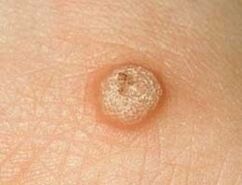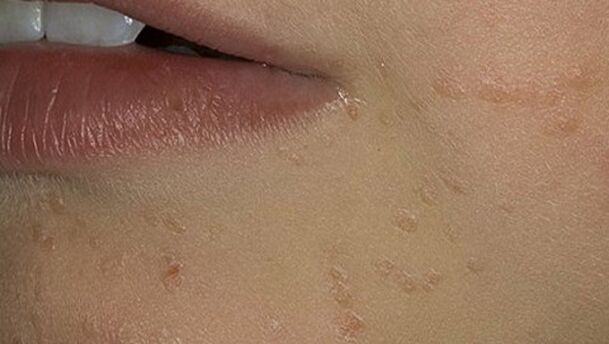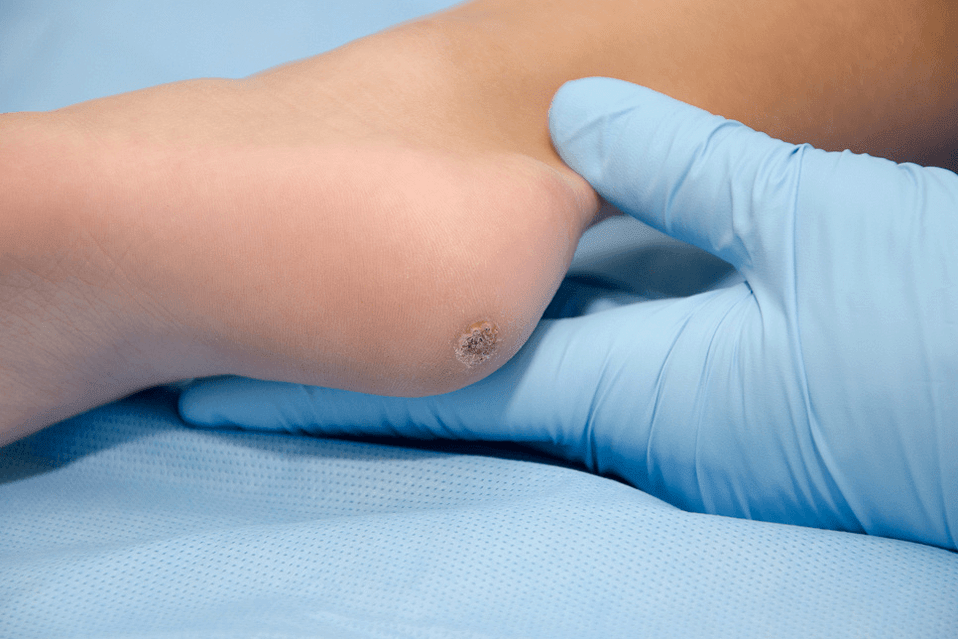Warts are benign (unlike malignancies - without the formation of cancer cells) skin formation caused by various members of the human papillomavirus (HPV) family, of which there are more than a hundred. Warts have no gender or age limit: their occurrence is the same in both sexes and does not depend on age.
Types of infection and causes of warts

Papillomavirus is spread by contact: either through direct contact with the carrier (handshake) or through contaminated household items and the environment (bath, shower, pool, etc. ). But don’t be put off by the hand of a colleague or good friend: the condition of infection is an unfavorable combination of several factors:
- skin cracks and microtraumas, chronic scratches. Risk group - people who, due to the nature of their professional activity, perform wet cleaning or hand washing: have many microtraumas on the skin;
- weak immunity (indicator - frequent colds);
- excessive sweating of the hands and feet.
If all went wrong, the first wart will appear in 1, 5-6 months: this is the incubation period of the HPV virus infection.
Types and symptoms of warts
Common warts
Such warts account for 2/3 of the total number of warts on the skin. At the same time, these warts are characterized by age-related readability: they often settle in children and younger students.
The favorite place for warts is the palms of the hands (palms and backs), the fingers, and occasionally (which is very uncomfortable from an aesthetic point of view) of the face. The appearance of the vulgar wart is very modest: round seal knot, ranging in size from the pinhead to the small pea. The color does not stand out on the skin. A single wart is rare: there is usually more or a whole scatter. In addition, one of the warts is the largest, it is called the maternal wart. If you eliminate it, the rest will come down on its own.
Flat (juvenile) warts

Another representative of "young" warts that affect people between the ages of 10 and 25. Small, flat papules that protrude only slightly on the surface of the skin and have a smooth (sometimes scaly) surface. Its color is fleshy, sometimes with a yellowish tinge. Flat warts are most commonly found on the back of the hand, wrist, face, and neck. Sometimes - on the head of the penis.
plantar warts

These warts are characterized by increased pain, which is especially felt while walking. Externally, plantar warts are difficult to distinguish from calluses. They can be convex or concave. Plantar warts appear according to their name - on the sole, in the places with the highest friction.
Senile (seborrhoeic) warts

The benign epithelial cancer that develops in old age over the years is called senile warts. Initially, it is a small brown spot that grows over time, reaching 5-6 cm in diameter. It thickens over time, its surface is covered with cracks, and it literally turns dark brown. Senile warts develop in closed areas of the body, but sometimes irritate the host on the face, neck, and limbs.
Condylomas (genital warts)
These warts have a specific localization: genitals, perineum, vaginal opening, and anus. They can occur in the armpits, under the female breast, and in children - in the nasolabial folds. In appearance, they are often compared to rooster or cauliflower because of their lobed structure. The warts are fleshy or pale pink in color, but when rubbed, they turn purple and begin to bleed. They form large colonies.
Diagnosis of warts
Diagnosing warts isn’t hard, it’s not rocket technology for you. Just look at the clinical manifestations of these unwanted growths. Plantar warts are distinguished from banal calluses by the papillary structure of the former, genital warts from broad warts, which are signs of secondary syphilis, have a denser texture, a broad base, and a wet surface.
Wart treatment
Warts are removed medically or mechanically. Given their viral "essence, " they fight it accordingly: they prescribe antiviral ointments. This prevents warts from spreading to areas that have not yet been developed. Among the folk methods, celandine's milky juice has spread, which stands out on the plant's cut.
Electrocoagulation (electric current + high temperature) helps to get rid of warts even in the most advanced cases.
Cryotherapy (cryodestruction with liquid nitrogen) is very well used to treat vulgar warts. This procedure is practically painless, so it can be used comfortably in children as well.
Plantar warts are treated in a complex way: first - by cryodestruction, then - by surgery, excision of the affected tissue area under local anesthesia.
Laser therapy is also used with different types of beams. The affected area depends on whether it evaporates or coagulates.
There is usually no particular problem with warts, but relapses do occur. And about half of the cases go away on their own without treatment.
As a preventative measure, we can advise you to react immediately to the appearance of a wart and take immediate action to eliminate it.























